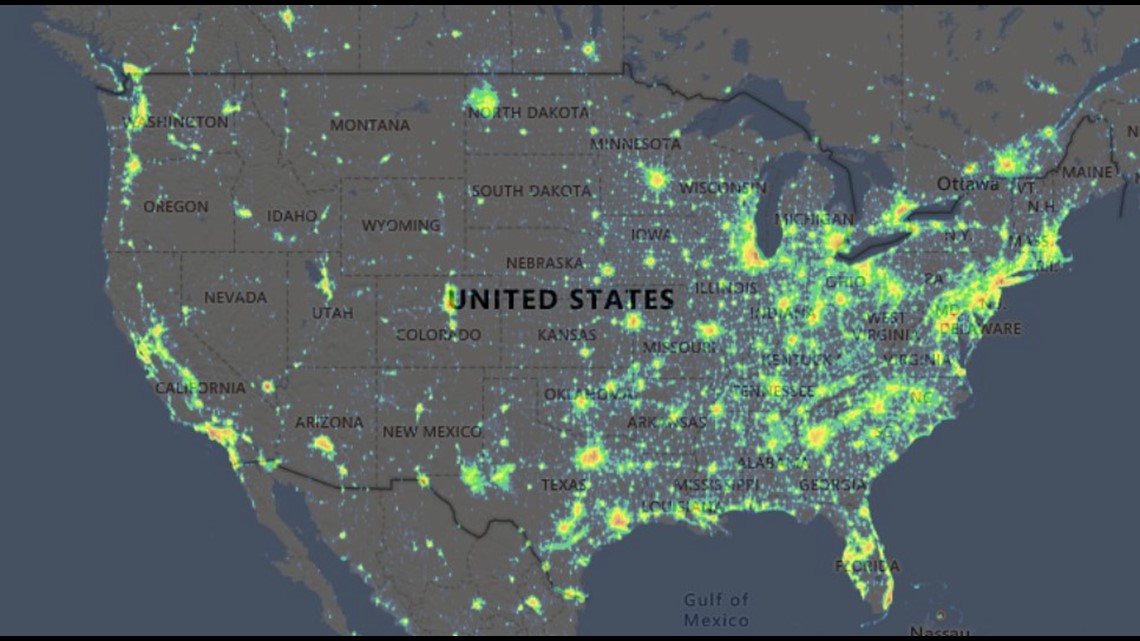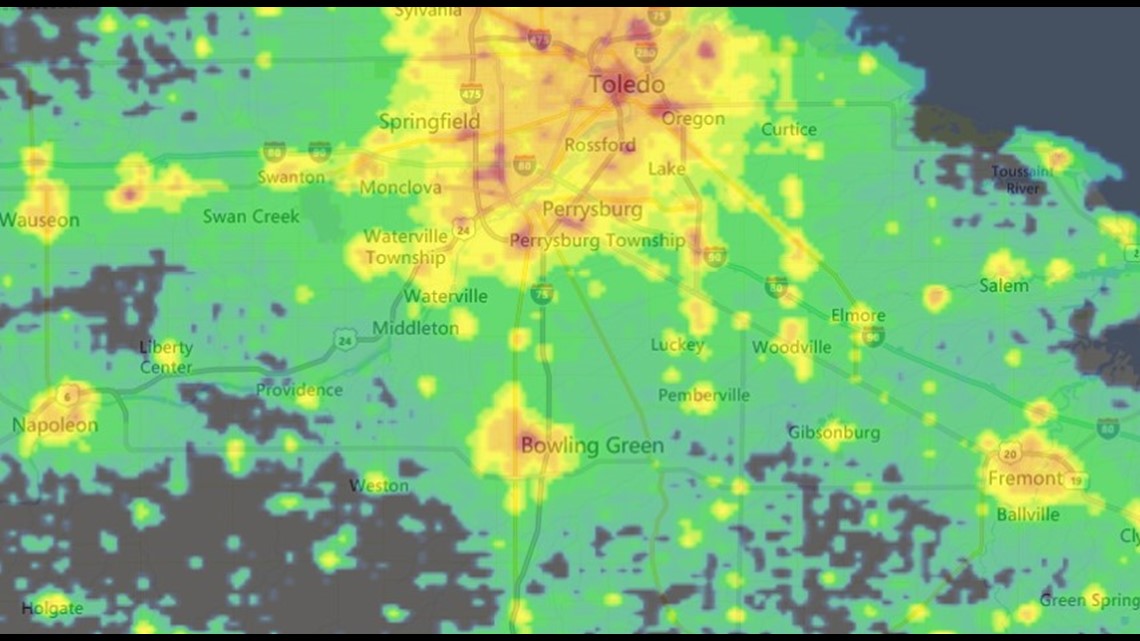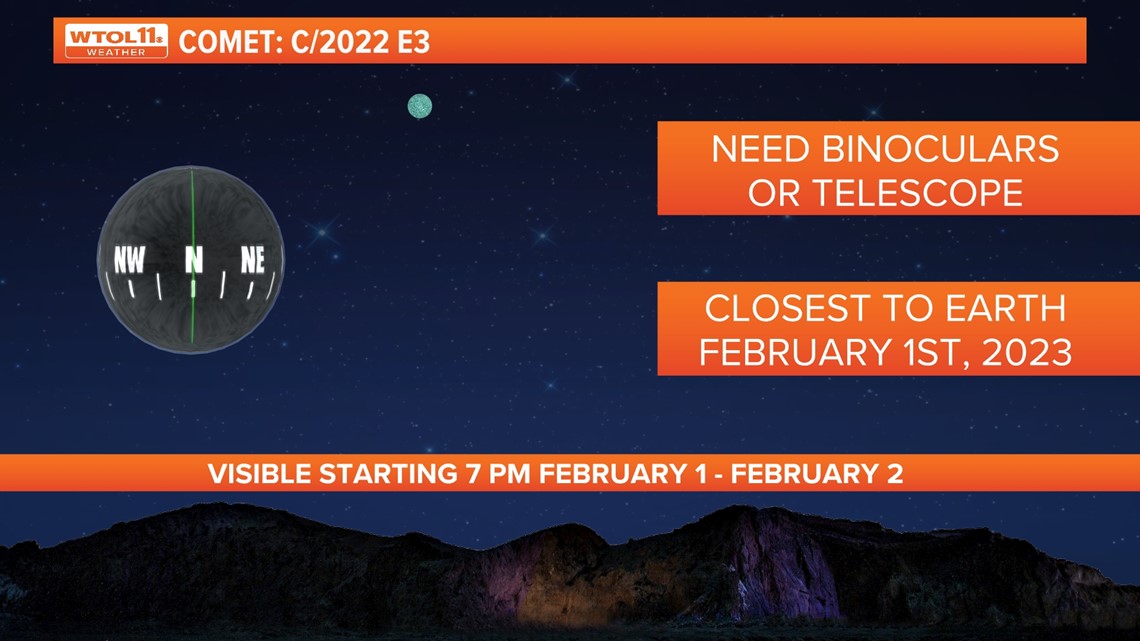TOLEDO, Ohio — For the first time in 50,000 years, C/2022 E3, or more well-known as the easy-to-remember "Green Comet," will make its closest approach to Earth on Feb. 1. With mostly clear skies forecasted through Wednesday evening, that means stargazers in northwest Ohio and southeast Michigan may catch a glimpse of the celestial body before it departs for potentially millions of years.
To see C/2022 for yourself, you'll need to find a mostly-dark sky. This can be difficult, given that light pollution from urban areas like Toledo can dim already faint celestial objects.
Light pollution is measured on something called the Bortle Scale. A ranking of 1 is true darkness, while 9 is the highest and brightest. Per a light pollution map, downtown Toledo is an 8, its suburbs a 7.


Fortunately, even in the Toledo area, there's nothing a quick drive out into the country can't solve for hopeful astronomers. Rural areas such as Whitehouse and Grand Rapids brings you to a Bortle rating of 4, making objects in the night sky much more visible.


Before you head out to see C/2022 E3, make sure to grab your binoculars or telescope. It's unlikely you will be able to see the comet with the naked eye.
Once you've found a suitable location, you will need to find the comet. The sun sets in northwest Ohio at 5:50 p.m. on Wednesday, but you may need to wait until at least 7 p.m. for the sky to be dark enough to see C/2022 E3.
At 7 p.m., the comet will be north-northeast; by 9 p.m., the comet will be exactly to the north. To locate it, find the constellation "Ursa Minor," more commonly known as the "Little Dipper," which includes Polaris, the north star.
At 9 p.m., locate Polaris (the "handle" of the Little Dipper) and look above it, but not so far that you are looking straight up. C/2022 E3 should be between the "top" of the sky and Polaris.


If you're able to see the comet, you may notice that it's green. According to scientists, the color is likely due to the presence of diatomic carbon in the comet's head. During photolysis, organic materials are broken down in a chemical reaction by photons and evaporated from the comet's nucleus, creating the green glow. The chemical reaction only has a lifetime of two days, which is why it can be seen in the comet's head, but not the tail.
C/2022 E3 was discovered by the Zwicky Transient Facility in California on March 2, 2022. At first thought to be an asteroid, astronomers eventually determined the object was instead a comet, which are small collections of dust, ice and rock. When comets approach the sun, some of the ice begins to melt, releasing gasses that trail behind the comet, producing the signature "tail."
If C/2022 E3 returns to Earth, it won't be for as many as several million years. It is also possible the comet will be ejected from the solar system entirely. This is the second time the comet is visible from Earth that scientists are aware of, but that does not guarantee it will return for a third time.
To leave the solar system, C/2022 E3 must be fast enough to escape the gravitational pull of the sun. If it is too slow, it may pass by Earth again. The speed of the comet is determined by numerous factors, including the gravitational pull of the other planets in the Solar System, which can affect the length of its orbital period. That's why the first orbital, inbound period lasted 50,000 years, but the outbound could be millions of years.
We can hope the comet visits Earth again for a third time, but one thing is for certain: nobody reading this will be there to find out.
MORE SCIENCE HEADLINES FROM WTOL 11


